The equine world is a tapestry woven with threads of power, grace, and stunning beauty. Among its most vibrant patterns is the Paint Horse, a breed renowned not just for its athletic prowess but for a coat that looks as if an artist meticulously splashed color across a canvas. Far more than just a pretty face, the Paint Horse embodies a rich history, remarkable versatility, and a temperament that has endeared it to equestrians across the globe.
This article delves into the fascinating world of the Paint Horse, exploring its origins, unique characteristics, behavior, and profound impact on human culture. Whether you are a student researching equine breeds, an animal lover hoping to understand these magnificent creatures, or an aspiring zoologist eager for deeper insights, prepare to be captivated by the spotted marvel that is the Paint Horse.
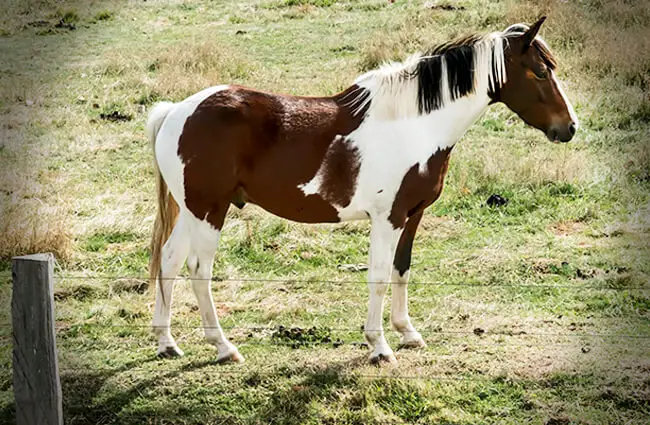
A Canvas of Color: Understanding the Paint Horse’s Distinctive Appearance
The most striking feature of the Paint Horse is undoubtedly its coat. Unlike other breeds where color is a secondary trait, the Paint Horse is defined by its unique patterns of white and any other equine color. These patterns are not random but fall into specific categories, each with its own genetic basis and visual appeal.
The Core Coat Patterns
- Tobiano: This is perhaps the most common and easily recognizable pattern. Tobianos typically have white crossing the back between the withers and the tail. The legs are usually white, at least below the hocks and knees. The head is often solid colored, with markings like a star, stripe, or snip. The dark color usually covers one or both flanks. The tail can be two-colored.
- Overo: The term “Overo” is a broad category encompassing several distinct patterns, all characterized by white markings that do not cross the back between the withers and the tail. Overo patterns often feature irregular, splashy white patches that appear to originate from the horse’s sides or belly. The legs are typically dark, and the head often has extensive white markings, such as a bald face.
- Frame Overo: Characterized by jagged, horizontal white patches on the sides, often “framed” by a darker color. The white rarely crosses the topline.
- Sabino: Often presents with high white stockings, extensive white on the face, and roaning (interspersed white hairs) on the body, sometimes with irregular white patches.
- Splashed White: Appears as if the horse was dipped in white paint, often with crisp, smooth-edged white markings on the legs, belly, and a broad white blaze or bald face. The eyes can sometimes be blue.
- Tovero: A combination of both Tobiano and Overo characteristics. Toveros often have dark pigmentation around the ears, which may expand to cover the forehead and eyes. One or both eyes can be blue. Dark spots may be present on the chest, flanks, or other areas.
- Solid Paint-Bred: Not all Paint Horses are spotted. A horse registered as “Solid Paint-Bred” possesses the genetic lineage of Paint Horses but does not exhibit the characteristic white spotting patterns. These horses are still valuable for their conformation, temperament, and athletic abilities, and can produce spotted foals when bred to a spotted Paint.
Beyond the patterns, Paint Horses come in every base color imaginable: bay, black, chestnut, sorrel, palomino, buckskin, grullo, dun, gray, and roan. This incredible diversity ensures that no two Paint Horses are exactly alike, making each individual a living work of art.
A Legacy Forged in the Americas: Evolution and History
The story of the Paint Horse is deeply intertwined with the history of the Americas. Its ancestors arrived on the continent with Spanish explorers in the 16th century. These Iberian horses, known for their hardiness and often colorful coats, quickly established feral populations across the vast plains.
Over centuries, these horses became the mounts of Native American tribes, who prized the spotted horses not only for their striking appearance but also for their camouflage in varied landscapes and their perceived spiritual significance. These horses were integral to hunting, warfare, and daily life, becoming a cornerstone of indigenous cultures.
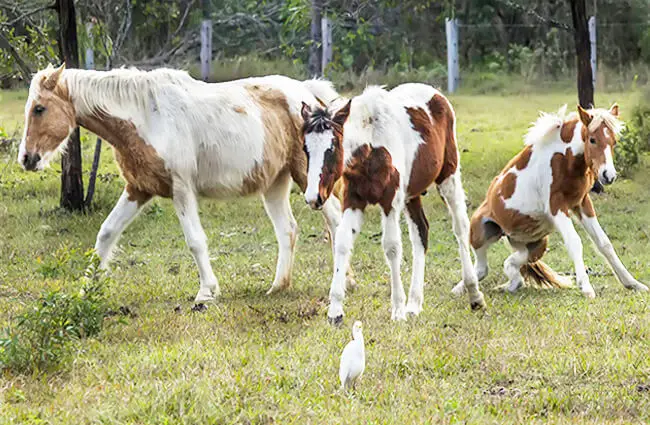
As European settlers moved westward, they encountered these hardy, colorful horses. The American Quarter Horse, known for its speed over short distances and its “cow sense,” began to emerge as a distinct type. Many of these early Quarter Horses carried the genes for spotting, and some were themselves spotted. Similarly, Thoroughbreds, imported for their speed and stamina, were also part of the genetic mix.
Initially, spotted horses were often discriminated against in some breed registries, which favored solid colors. However, a dedicated group of enthusiasts recognized the unique qualities of these colorful equines. In 1962, the American Paint Horse Association (APHA) was founded, establishing a registry specifically for horses with both the distinctive spotting patterns and the conformation typical of stock horses (Quarter Horse and Thoroughbred type). This pivotal moment officially recognized the Paint Horse as a distinct breed, celebrating its color, athleticism, and willing disposition.
Where the Wild Things Aren’t (Quite): Habitat and Diet
Habitat
Unlike truly wild species, the Paint Horse is a domesticated breed. Therefore, its primary “habitat” is human-managed environments: ranches, farms, equestrian centers, and private properties across the globe. They thrive in environments where they receive consistent care, shelter, and appropriate nutrition.
However, it is important to note that semi-feral populations of horses, often with Paint Horse ancestry, can be found in certain regions, particularly in the western United States. These horses inhabit diverse landscapes, from arid rangelands and high deserts to mountain valleys and scrublands. In these environments, they adapt to the available forage and water sources, demonstrating the resilience inherited from their wild ancestors.
Diet
As herbivores, Paint Horses, like all horses, primarily graze on forage. In a managed setting, their diet consists mainly of:
- Grass: Fresh pasture grass is the most natural and ideal food source.
- Hay: When pasture is unavailable or insufficient, good quality hay (such as timothy, orchard grass, or alfalfa) forms the bulk of their diet.
- Grains: Depending on their workload, age, and individual needs, horses may receive supplemental grains like oats, barley, or commercially prepared feeds to provide additional energy and nutrients.
- Supplements: Vitamins, minerals, and salt are often provided through mineral blocks or added to feed to ensure a balanced diet.
In semi-feral populations, horses forage on whatever vegetation is available, including various grasses, shrubs, and even tree bark during lean times. Access to fresh water is paramount in all environments.
![Portrait of a stunning Paint Horse in the show ring Photo by: Marie Kuiper [public domain] https://creativecommons.org/licenses/by-sa/2.0/](https://animals.net/wp-content/uploads/2020/03/Paint-Horse-6-650x425.jpg)
Life Cycle and Social Dynamics: Mating, Reproduction, and Herd Behavior
Mating and Reproduction
Paint Horses follow the typical reproductive cycle of domestic horses. Mares (females) are seasonally polyestrous, meaning they cycle during the warmer months, typically from spring through fall. The gestation period for a mare is approximately 11 months, though it can vary slightly (320 to 360 days).
- Breeding Season: Most breeding occurs in spring and early summer to ensure foals are born during favorable weather conditions.
- Estrus Cycle: Mares typically come into estrus (heat) every 19 to 22 days, with estrus lasting about 5 to 7 days.
- Foaling: Mares usually give birth to a single foal. Twin pregnancies are rare and often carry significant risks to both mare and foals. Foals are precocial, meaning they are relatively mature and mobile shortly after birth, able to stand and nurse within an hour or two.
- Weaning: Foals are typically weaned from their mothers between 4 to 7 months of age, depending on management practices.
- Maturity: Paint Horses reach sexual maturity around 18 months to 2 years of age, though they are generally not bred until they are 3 or 4 years old to allow for full physical development.
Social Behavior and Herd Dynamics
Horses are inherently social animals, and Paint Horses are no exception. They thrive in herd environments, whether in a pasture with other horses or within a human-managed social structure. Key aspects of their social behavior include:
- Herd Hierarchy: Within a herd, a clear pecking order or dominance hierarchy is established. This helps maintain order and minimize conflict.
- Communication: Horses communicate through a complex array of vocalizations (whinnies, nickers, snorts), body language (ear position, tail swishing, head carriage), and scent.
- Mutual Grooming: Horses often engage in mutual grooming, scratching each other’s backs and necks, which strengthens social bonds.
- Play: Especially among younger horses, play behavior is crucial for developing physical coordination and social skills.
- Protection: In a herd, horses offer mutual protection against perceived threats, with older, more experienced mares often acting as leaders.
Ecosystem Contributions and Interactions with Other Animals
As a domesticated breed, the Paint Horse’s direct contribution to natural ecosystems is limited compared to wild species. However, where semi-feral populations exist, they play a role similar to other large herbivores:
- Grazing: They influence plant communities through selective grazing, which can impact vegetation structure and composition.
- Seed Dispersal: Seeds can be dispersed through their digestive tracts or carried on their coats.
- Soil Disturbance: Their hooves can disturb soil, which can affect plant growth and water infiltration.
- Prey Species: In areas with large predators like wolves or mountain lions, semi-feral horses can become a prey source, contributing to the predator-prey dynamics of the ecosystem.
In managed environments, their interaction with other animals is largely controlled. They coexist with other livestock, domestic animals, and sometimes local wildlife, typically without significant ecological impact.
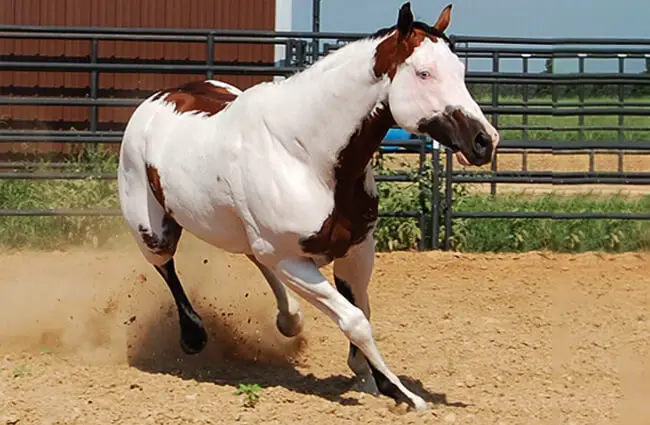
A Partner Through Time: Human Interaction and Cultural Contributions
The Paint Horse’s relationship with humans is one of deep partnership, spanning centuries and cultures. From their early days as mounts for Native American tribes to their modern role in competitive arenas, these horses have left an indelible mark on human society.
Human Interaction
Paint Horses are highly valued for their temperament. They are generally intelligent, tractable, and willing partners, making them suitable for a wide range of riders, from beginners to seasoned professionals. Their versatility means they interact with humans in countless ways:
- Ranch Work: Historically and presently, Paint Horses are indispensable on ranches for herding cattle, checking fences, and general farm duties. Their agility and “cow sense” make them excellent working partners.
- Equestrian Sports: They excel in various Western disciplines, including reining, cutting, barrel racing, roping, and Western pleasure. Their athleticism also allows them to compete successfully in English disciplines like hunter under saddle and show jumping.
- Trail Riding and Recreation: Their calm demeanor and stamina make them popular choices for pleasure riding, trail riding, and family horses.
- Therapeutic Riding: The gentle nature of many Paint Horses makes them ideal candidates for therapeutic riding programs, assisting individuals with physical, cognitive, or emotional challenges.
- Companionship: Beyond their utility, Paint Horses form strong bonds with their human handlers, offering companionship and emotional support.
Cultural Contributions
The Paint Horse has become an iconic symbol, particularly of the American West. Its image evokes notions of freedom, adventure, and the rugged beauty of the frontier. They are celebrated in:
- Art and Literature: Featured prominently in Western art, photography, and literature, symbolizing the spirit of the West.
- Rodeos and Shows: They are stars of the rodeo circuit and equestrian show rings, showcasing their athleticism and beauty to vast audiences.
- Breed Associations: The American Paint Horse Association (APHA) is one of the largest breed registries in the world, promoting the breed and its various disciplines.
Encountering Paint Horses: From Wild to Captive Care
Finding Paint Horses in the Wild (or Semi-Wild)
For an animal lover hoping to find a Paint Horse in the wild, it is crucial to understand that truly wild Paint Horses do not exist as a distinct wild species. The Paint Horse is a domesticated breed. However, horses with Paint Horse ancestry can be found in semi-feral herds, particularly in designated wild horse management areas in the western United States (e.g., parts of Nevada, Wyoming, Montana, Oregon). These herds are managed by agencies like the Bureau of Land Management (BLM).
How to find them:
- Designated Viewing Areas: Research specific BLM Herd Management Areas (HMAs) that are known for having colorful horses.
- Guided Tours: Some organizations offer guided tours to observe wild horse herds.
- Respect Boundaries: Always observe from a significant distance using binoculars or telephoto lenses. Never approach, feed, or attempt to interact with these animals.
Remember, these are not “wild” in the sense of never having been domesticated, but rather free-roaming populations that have adapted to life without direct human intervention.
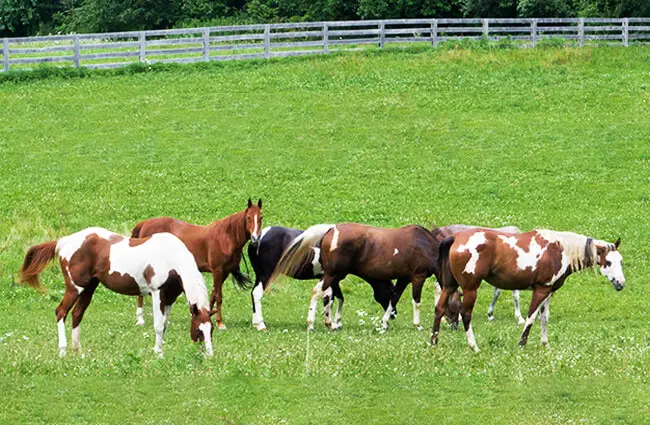
What to Do if You Encounter a Paint Horse in the Wild
If you encounter a free-roaming horse, whether it is clearly a Paint or another type, remember these guidelines:
- Maintain Distance: Keep a safe and respectful distance. Horses are powerful animals and can be unpredictable, especially if they feel threatened.
- Do Not Approach: Never try to walk up to or touch a wild or semi-feral horse.
- Do Not Feed: Feeding wild animals can alter their natural behavior, make them dependent on humans, and can lead to digestive problems or aggression.
- Observe Quietly: Enjoy the rare opportunity to observe these magnificent animals in their natural setting. Move slowly and avoid sudden movements or loud noises.
- Be Aware of Your Surroundings: Pay attention to the horse’s body language. Ears pinned back, stomping, or snorting can indicate agitation. If a mare has a foal, be extra cautious, as she will be protective.
- Report Concerns: If a horse appears injured, sick, or in distress, contact local animal control, wildlife authorities, or the BLM.
Caring for a Paint Horse in Captivity: A Zookeeper’s Guide
Caring for a Paint Horse in a captive environment, such as a zoo or specialized equine facility, requires diligent attention to their physical and psychological needs. The goal is to replicate, as much as possible, the conditions that allow them to thrive.
Essential Tasks for Zookeepers:
- Nutrition Management:
- Provide a consistent diet of high-quality forage (hay and/or pasture) as the primary food source.
- Supplement with appropriate grains and balanced commercial feeds based on the horse’s age, weight, activity level, and health status.
- Ensure constant access to fresh, clean water.
- Provide free-choice salt and mineral supplements.
- Monitor body condition score regularly to prevent obesity or malnourishment.
- Shelter and Environment:
- Provide adequate shelter from sun, wind, rain, and snow. This can be a run-in shed or a barn stall.
- Ensure stalls are clean, dry, and well-bedded.
- Provide ample turnout space for exercise and natural grazing behavior.
- Maintain fencing to be safe and secure.
- Health and Veterinary Care:
- Establish a routine vaccination schedule as recommended by an equine veterinarian.
- Implement a regular deworming program based on fecal egg counts.
- Schedule routine dental examinations and floating (filing sharp points on teeth) at least once a year.
- Arrange for regular farrier care (hoof trimming and shoeing if needed) every 4-8 weeks.
- Monitor for signs of illness or injury daily and seek veterinary attention promptly when needed.
- Be aware of genetic conditions common in Paint Horses, such as Lethal White Overo Syndrome (LWO) in some Overo lines, and ensure genetic testing is performed on breeding animals.
- Grooming and Hygiene:
- Daily grooming helps maintain coat health, stimulates circulation, and allows for early detection of skin issues or injuries.
- Regularly pick out hooves to prevent stone bruises and thrush.
- Socialization and Enrichment:
- Horses are herd animals; provide opportunities for social interaction with other equines if possible and safe.
- Offer environmental enrichment, such as toys, slow feeders, or varied turnout areas, to prevent boredom and encourage natural behaviors.
- Provide consistent, positive human interaction through handling, training, and exercise.
What to Avoid:
- Overfeeding or Underfeeding: Both can lead to serious health issues.
- Inconsistent Routine: Horses thrive on routine; sudden changes can cause stress.
- Poor Sanitation: Dirty stalls or water troughs can lead to disease.
- Neglecting Hoof Care: Can result in lameness and long-term hoof problems.
- Lack of Exercise: Can lead to boredom, behavioral issues, and physical ailments.
- Isolation: Prolonged isolation from other horses can cause psychological distress.
- Ignoring Subtle Signs of Illness: Horses are masters at hiding pain; vigilance is key.
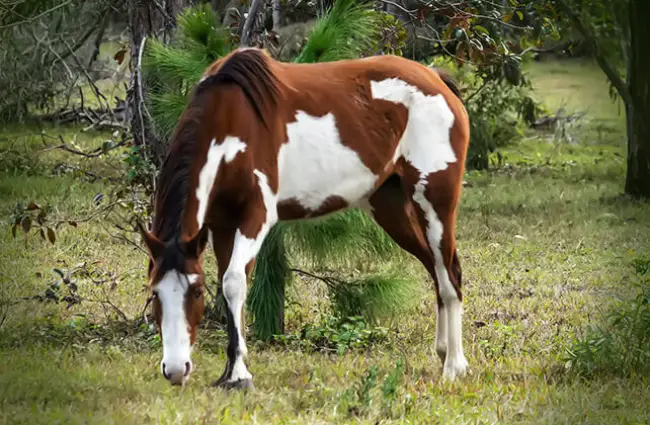
Interesting Facts About Paint Horses
- Not Just a Color: While color is their defining trait, Paint Horses are a true breed with specific conformation requirements, not just a color registry. They must have Quarter Horse or Thoroughbred bloodlines.
- Genetic Diversity: The APHA registry allows for a wide range of genetic backgrounds, contributing to the breed’s robustness and versatility.
- Blue Eyes: Many Paint Horses, especially those with extensive white on their faces (often Overos), can have striking blue eyes, which are perfectly healthy.
- Lethal White Overo Syndrome (LWO): A serious genetic condition affecting foals born from two Overo parents carrying the specific LWO gene. These foals are born pure white and die shortly after birth due to an underdeveloped digestive system. Responsible breeders test for this gene.
- Versatility Champions: Paint Horses consistently rank among the most versatile breeds, excelling in nearly every equestrian discipline.
- Global Presence: While originating in the Americas, Paint Horses are now found and celebrated by enthusiasts worldwide.
- Unique Markings: Every spotted Paint Horse has a unique pattern, much like human fingerprints.
Conclusion: The Enduring Appeal of the Painted Equine
The Paint Horse stands as a testament to nature’s artistry and the enduring partnership between humans and horses. From its ancient origins with Spanish explorers to its modern-day status as a beloved show horse and companion, this breed has consistently demonstrated its intelligence, athleticism, and striking beauty. Whether galloping across a Western landscape or performing intricate maneuvers in an arena, the Paint Horse continues to captivate hearts and minds, proving that true beauty and capability often come in the most colorful packages. Understanding this magnificent animal enriches our appreciation for the diverse world of equines and the profound connections we share with them.

![Red Angus Closeup of a beautiful Red Angus cowPhoto by: U.S. Department of Agriculture [pubic domain]https://creativecommons.org/licenses/by/2.0/](https://animals.net/wp-content/uploads/2020/03/Red-Angus-4-238x178.jpg)



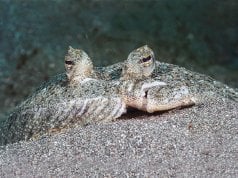
![Red Angus Closeup of a beautiful Red Angus cowPhoto by: U.S. Department of Agriculture [pubic domain]https://creativecommons.org/licenses/by/2.0/](https://animals.net/wp-content/uploads/2020/03/Red-Angus-4-100x75.jpg)

